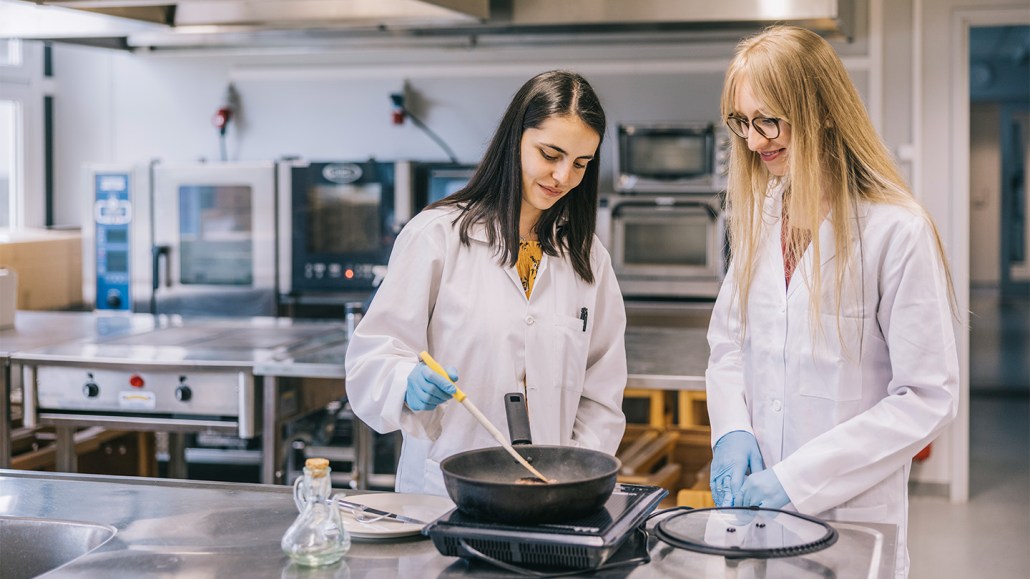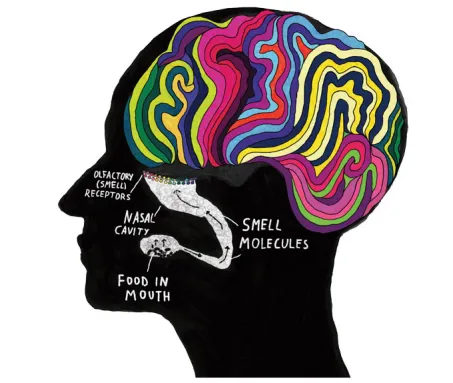
Understanding the science of flavor makes for more delicious cooking, a new book explains.
visualspace/E+/Getty Images

Flavorama
Arielle Johnson
Harvest, $40.00
What gives a lemon its lemoniness? It’s the physical molecules within the fruit. A bite into a lemon wedge sends citric acid molecules and other compounds to the tongue and through the nose, a one-two punch of the sour taste and citrusy scent that the brain senses as lemony.
Being a combination of taste and smell makes flavor a challenge for people who want to master it. There are five distinct tastes — salty, sour, sweet, umami and bitter — and the tongue has dedicated receptors for detecting molecules that correspond to each one (SN: 1/25/16). Smell is more complicated, with about 400 types of smell receptors in the nose that capture signals from many, many different molecules (SN: 3/20/14). Taken together, this means a near-infinite number of flavors exists.
Perhaps there’s no better guide to this complex landscape than Arielle Johnson. She not only has a Ph.D. in chemistry, but she also was the resident scientist at Noma, a fine-dining establishment in Copenhagen that has been named the World’s Best Restaurant five times since it opened in 2003.
Johnson distills her expertise in both the kitchen and the lab in Flavorama: A Guide to Unlocking the Art and Science of Flavor. Complete with colorful illustrations and fun recipes, the book is a satisfying read regardless of your familiarity with science or cooking.
Flavorama is split into sections that each feature one of Johnson’s laws of flavor. After establishing that “Flavor is molecules,” she moves on to “Flavor is taste and smell.” Smell, perhaps counterintuitively, often influences flavor more than taste does, thanks to the numerous smell receptors, she explains. Smell can also evoke emotional memories more intensely than other sensory inputs. Hand-drawn illustrations of the human brain and nasal cavity explain why by showing how nerve cells that line the roof of the nasal cavity detect scent molecules and send signals directly to the limbic system, a part of the brain that handles feelings and memories. Other sensory inputs, in contrast, are first processed in different parts of the brain before arriving at the limbic system.

Johnson dives deep into different tastes and smells to illustrate her next law: “Flavor follows predictable patterns.” Johnson peppers recipes throughout this section to highlight each taste and smell category. One atypical recipe, umami-boosted cacio e pepe, urges readers to add anchovies and nutritional yeast to this traditional Italian pasta dish of cheese and black pepper to boost the umami flavor that can be hard for some to pinpoint. Identifying flavors is something most of us can learn to do, Johnson argues.
The next law proclaims that “Flavor can be concentrated, extracted and infused.” By moving flavor molecules around selectively, you can make a flavor more intense or more diffused, and its medium more viscous or more liquid. For instance, juicing can remove flavorless solids from a tasty liquid like orange juice. The chemical principle of “like dissolves like” can help extract flavor molecules, such as in concocting compound butter. When mixed with garlic, butter and its fats draw out the aromatic ingredient’s oily molecules, complementing the butter’s flavor.
The book closes with the final law, “Flavor can be created and transformed,” in which Johnson shows how to manipulate flavors with heat and fermentation (SN: 3/29/23).
Johnson would be the first to tell you that Flavorama will not help you make the perfect chocolate chip cookie or avoid mistakes in the kitchen. What the book teaches instead is how to use “flavor science as a liberating tool for improvising” when the unexpected inevitably happens. Did the butcher run out of the short ribs the recipe calls for? Did the grocery store have only sad-looking parsley? Thinking like a flavor scientist can help you identify an alternative ingredient that can save the day.
Buy Flavorama from Bookshop.org. Science News is a Bookshop.org affiliate and will earn a commission on purchases made from links in this article.






